#island birds
Explore tagged Tumblr posts
Text
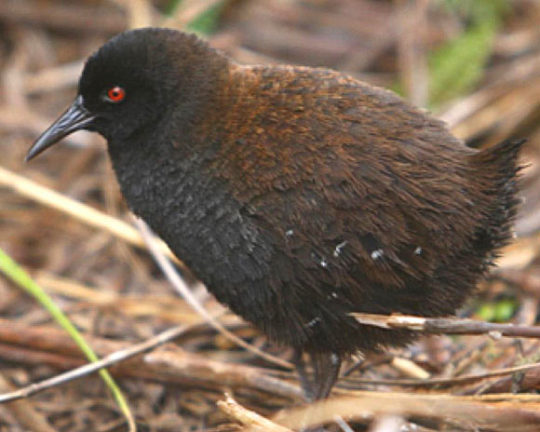
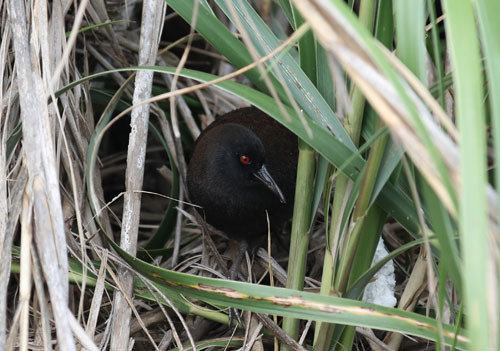

Access Denied: The Inaccessible Island Rail
The Inaccessible Island rail (Laterallus rogersi) is a rarely seen member of the rail family, Rallidae. Part of the reason for its obscurity is the place in which it resides: Inaccessible Island, part of the Tristan da Cunha archipelago in the southern Atlantic Ocean. These islands are extremely remote, and until 2019 it was unclear how L. rogersi even came to be there. We now know that the species colonized the island some 1.5 million years ago, originally coming in from South America and subsequently losing its ability to fly.
In addition to its unique evolutionary history, the Inaccessible Island rail's greatest claim is that it is the smallest flightless bird in the world. Individuals weigh between 35 to 49 g (1.2–1.7 oz) and can be 13 to 15.5 cm (5.1–6.1 in) long from beak to tail. Members of both sexes are dark brown with red eyes; some may have white striping along the underbelly or wings. Females tend to be slightly smaller and lighter in color than males.
The Inaccesible Island rail can be found on all habitats on the island in which it inhabits; these include low mountains and fern brush though the species is most abundant in the grasslands that grow close to the rocky shore. Within these habitats, L. rogersi is largely diurnal. They freely forage for invertebrates, including earthworms, beetles, and moths, as well as seeds and berries; as they have no natural predators they have few defenses against potential threats, although they can run extremely fast when alarmed.
Adults are highly territorial, and when two rivals of either sex encounter each other they will display by lowering their heads, circling each other, and calling loudly until one of them concedes. Males and females mate for life, and build nests in the tall grass. The breeding season is between October and January, in late summer, and females lay a clutch of 2 eggs. Both parents take turns incubating the eggs until they hatch. Chicks can be vulnerable to predation by the migratory brown skua, so parents guard the nest fiercely. The time it takes for chicks to fully mature is unknown, as is the average lifespan in the wild.
Conservation status: The Inaccessible Island rail is considered Vulnerable by the IUCN. The island's population is believed to stand at about 5,600 adult birds. While the island's ecology is currently stable, researchers believe the species would be seriously imperaled if invasive species such as house mice, feral cats and brown rats were introduced. Access to the island is currently restricted, and the island has been declared a nature reserve by the Tristan da Cunha Island Council.
If you like what I do, consider leaving a tip or buying me a kofi!
Photos
Peter G. Ryan
#inaccessible island rail#Gruiformes#Rallidae#rails#birds#islands#island birds#grasslands#grassland birds#Atlantic ocean#animal facts#biology#zoology
950 notes
·
View notes
Text
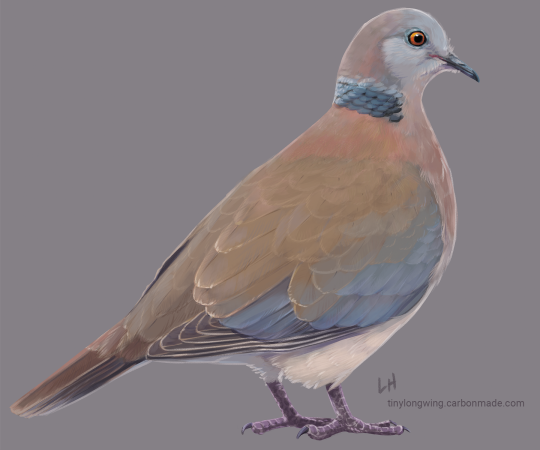
Philippine Collared-Dove (Streptopelia dusumieri). Declining in their home range (Philippines), but quite common in villages of the Northern Mariana Islands where they were introduced sometime in the 1700s. Now considered naturalized, they're charming & sort of goofy with their hoarse cooing from the power lines and coconut palms.
#dove#pigeon#collared-dove#birb#borb#scientific illustration#ornithology#island birds#northern mariana islands#cnmi#philippines#philippine collared-dove#birblr#birdblr#artists on tumblr
281 notes
·
View notes
Text
A muppet dinosaur
#birds#birding#great blue heron#nature#nature photography#vancouver island#pnw#bird photography#birdwatching#queue#original photography on tumblr
5K notes
·
View notes
Text


Petit Manan Lighthouse, Petit Manan Island, Steuben. Possibly my favorite lighthouse. In the summer, this island is home to hundreds of birds. Including Atlantic puffins, arctic, common and roseate terns, as well as black guillemots and many more. Decided I couldn't draw them all, but here's a couple attempts to try and capture the island's vibes. Can you spot the oystercatchers? MERCH
#Petit Manan#Petit Manan Island#Petit Manan Light#Petit Manan Lighthouse#Steuben#Maine#Lighthouse#light#island#Maine island#art#illustration#design#sticker#National Wildlife Refuge#Maine Coastal Islands National Wildlife Refuge#Maine Coastal Islands#breeding colony#terns#tern colony#puffin#Atlantic puffin#black guillemot#sea birds#sea bird#arctic tern#flying#in flight#bird#birds
3K notes
·
View notes
Text
Five years after a massive effort to remove invasive mice and rats from Lord Howe Island, the unique ecosystem is experiencing what is being called "an ecological renaissance" as the endangered flora and fauna recovers.
Lord Howe Island woodhens were reduced to only 30 individuals in the 70s due to egg predation from the invasive rodents, but in just the last five years the population has jumped from 200 to over 2,000.
From the article:
"It's just amazing, the changes that have happened in the forest--it has blown me out of the water really. I thought it would change but I just can't believe how quickly things have been happening."
#conservation#biodiversity#bird conservation#island conservation#plant conservation#ecology#hope#hopepunk#environment#invasive species#conservation works#conservation success stories#radical optimism#endangered species#ecological grief#ecoanxiety
1K notes
·
View notes
Text
"Over 10,000 square miles of additional protected area will be added to the Heard and McDonald Islands in Australia’s far southern territorial waters.
Coupled with other expansions of existing marine sanctuaries, it puts Australia on course to have 52% of its ocean territory protected, more than any other nation, by the end of the current administration’s term.
“This is not just a huge environmental win for Australia, it’s a huge environmental win for the world,” said Australian Environment Minister Tanya Plibersek. “This is a unique and extraordinary part of our planet. We are doing everything we can to protect it.”
Located over 2,000 miles south of the Australian continent, Heard and McDonald Islands make up about 144 square miles of volcanic terrain that represent one of the most remote places on Earth.
They are important breeding grounds for 19 species of bird, including 4 species of penguins, but dozens of other bird species take refuge there. It is a UNESCO Natural Heritage Site, and a RAMSAR Wetland in addition to being an Australian national marine sanctuary.
The quadrupling of the sanctuary borders amounts to 11.5 thousand square miles, (30,000 sq km) of additional protection, but represents one-tenth of the total proposed expansions of marine protected areas.
Under the current guidance, prepared by nationally sanctioned scientific surveys, the total marine protected areas will make up an area the size of Italy.
The current administration of Prime Minister Anthony Albanese is seeking to establish a new environmental protection agency, as well as set a high bar for the country’s commitments to an international philosophy of conservation governance known shorthand as “30×30” or “30 by 30,” which states that to prevent the worst effects of general environmental degradation worldwide, 30% of land and waters should be under protections. Often the second thirty refers to a hypothetical 2030 deadline."
-via Good News Network, October 10, 2024
#australia#islands#unesco world heritage site#marine protected area#marine sanctuary#30 by 30#birds#environment#environmental news#climate action#climate hope#biodiversity#conservation#good news#hope
2K notes
·
View notes
Text

Tobogganing penguins By: W. R. Curtsinger From: The Fascinating Secrets of Oceans & Islands 1972
853 notes
·
View notes
Text

"What is to come"
(image id is both in the alt text and below the read more- I put it under one because it's incredibly long)
And so there we have it, the 200+ followers artpiece that I have been working on for several days, if I had to guess I'd say it took 25 or so hours over eleven days. Honestly it's so surreal to me that I'm here with over 200 followers (260 as of typing this- yes, I procrastinated on this), especially when I only hit 100 followers in February. It's genuinely really nice to know that people are actually interested in my art (before anyone brings up spam bots- I know there are a few of them amongst my followers but I've checked most of them and I am 100% confident that over 200 of them are real). I don't really have much else to say really- I'm just grateful to have the support. Thanks y'all :).
[Image id: a large, lineless digital drawing of several dinosaurs. It is nighttime. At the bottom of the piece, a lone Eoraptor lunensis is walking across the floodplains- both the ground and the Eoraptor are just silhouettes, the early dinosaur has been given protofeathers. The full moon is shining, it's size is exaggerated for artistic affect. Behind the moon, the heads of sixteen different dinosaurs can be seen (listed left to right, bottom to top) Row 1- Thecodontosaurus antiquus (small sauropodomorph with light brown protofeathers, near-white undersides, straight stripes that are moderately darker than the base colour and vibrant green eyes), Coelophysis bauri (small early theropod with a long and narrow skull, its protofeathers are golden and black. A soft orange stripe runs across the back of its head, it has warm brown eyes. Row 2- Plateosaurus trossingensis (long-necked sauropodomorph, it has reddish-brown scales, light undersides, triangular stripes running down it's spine that get bigger the further down they get and pale yellow eyes), Heterodontosaurus tuckii (small ornithopod with a hooked grey beak. It has spiky green feathers, a lighter chest and a darker stripe running along its head and back, there are three small spots on its face, two behind the eye and one infront of it, it's eyes are bright yellow). Row 3- Megalosaurus bucklandii (medium-sized theropod with warm brown feathers, lighter undersides, dark spots and bright yellow eyes, there are several scars on its face), Brachiosaurus altithorax (greenish-grey true sauropod with lighter undersides, a dark pink patch on its throat, dark desaturated brown eyes and a few small scars on its neck), Archaeopteryx (early toothed bird with a black head, white neck and bright yellow eyes). Row 4- Hylaeosaurus armatus (pale brown ankylosaur with lighter undersides and vibrant green eyes), Velociraptor mongoliensis (dromaeosaur with light brown feathers, a lighter chest, a black stripe near its eye and light green eyes), Sinosauropteryx prima (small compsognathid theropod with ginger protofeathers, an off white mask and undersides and pale yellow eyes), Iguanodon bernissartensis (large greenish-grey ornithopod with a slightly darker back, pale undersides, a grey beak, and yellow eyes). Row 5- Matuku otagoense (heron with medium grey feathers and a small crest. A red stripe runs from just behind its nostrils to about a third of the way down its neck. Its undersides are white, its beak is grey and its eyes are brown), Triceratops prorsus (three-horned ceratopsian with grey-brown scales, lighter undersides, two triangular stripes between it's brow and nasal horns, reddish-orange diamond-like stripes on its frill, a hooked grey beak and golden eyes. Its brow horns curve forward at the base. Row 6- North Island brown kiwi (plump brown bird with a long pale beak, whiskers and black eyes, its nostrils are at the tip of its bill, and unlike the other dinosaurs in the sky part of its body below the neck is visible), male house sparrow (small redish-brown and grey bird with a black bib below it's bill), it has brown eyes and a dark grey bill. Row 7- rock dove (grey bird with iridescent green feathers scattered across its neck, a dark grey beak, and warm brown eyes). end id]
#art#my art#digital art#paleoart#dinosaurs#birds#eoraptor#thecodontosaurus#coelophysis#plateosaurus#megalosaurus#brachiosaurus#archaeopteryx#hylaeosaurus#velociraptor#sinosauropteryx#iguanodon#matuku#triceratops#north island brown kiwi#house sparrow#rock dove
3K notes
·
View notes
Text
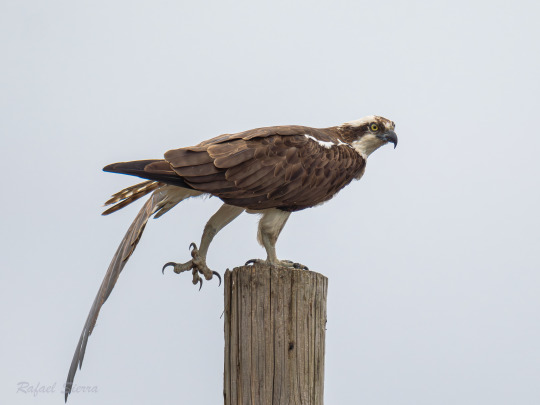
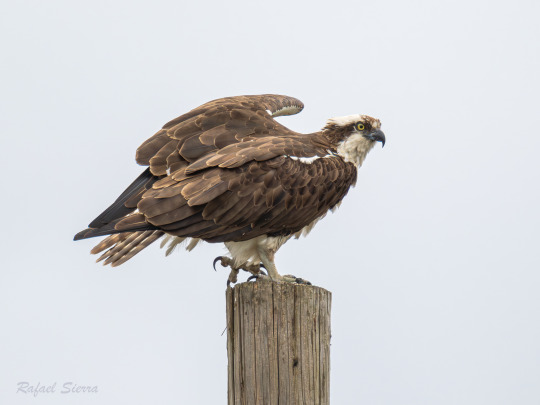
Osprey stretching its lethal talons before the hunt
Sauvie Island, OR
#osprey#suavie island#original photography#photographers on tumblr#raptors#birds#bird photography#photography#nature photography#oregon#PNW#pacific wonderland#pacific northwest#om system#om 1#rafefar#talons
2K notes
·
View notes
Text

Who invited this guy to the Yoshi meeting? 🤨
#yoshi#yoshi’s island ds#doweesig art#yoshi’s island#baby mario#baby peach#stork#bandit#mario#princess peach#yoshis island#yoshis island ds#super mario#peach#nintendo#my art#comic#the angry birds movie#angry birds
1K notes
·
View notes
Text
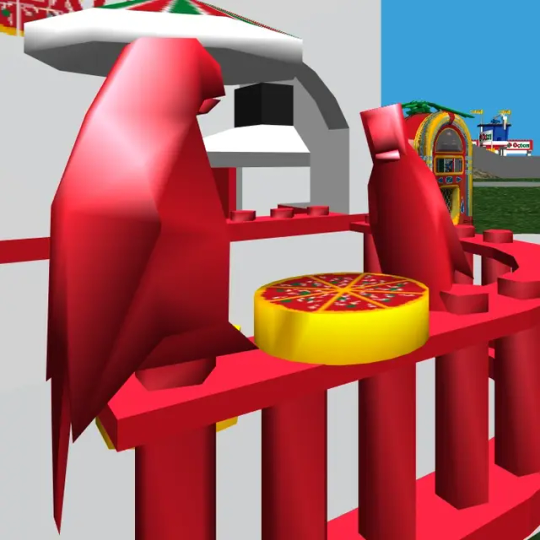
Mr. and Mrs. Pollywanna from LEGO Island
#mr and mrs pollywanna#parrot#bird#lego island#thank you for your submission!#i love them#and i hope they had a wonderful meal
5K notes
·
View notes
Text

South Island takahē (Porphyrio hochstetteri)
© Aaron Skelton
874 notes
·
View notes
Text

More of my artwork from Nature by NorthStar Games. This is the Flight module's Faraway Place, a tropical island paradise for birds to migrate to that can't be reached by predators or competitors. Based on a photo I took at a real world location that's very close to my heart - does anyone recognize specifically which island this is?
#birblr#birds#scientific illustration#board games#saipan#artists on tumblr#tropicbird#tern#noddy#tropical island
3K notes
·
View notes
Text
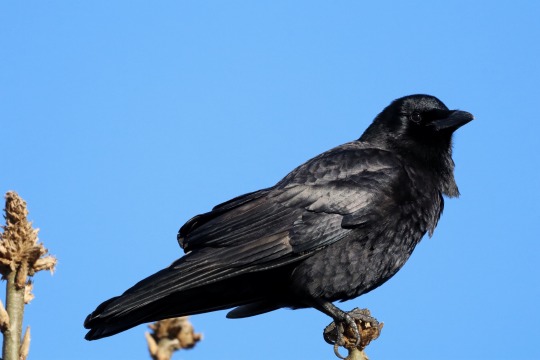
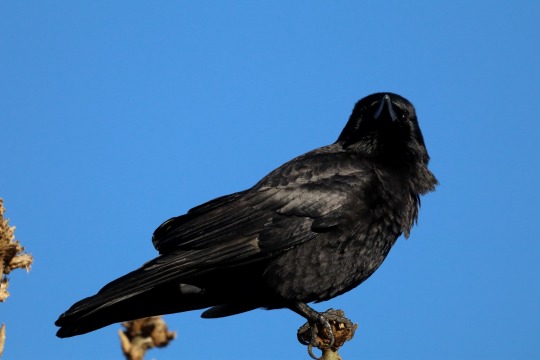
#birds#bird photography#queue#original photography on tumblr#birdwatching#nature#nature photography#vancouver island#pnw#birding#corvid#American crow
473 notes
·
View notes
Text
Tiny Indian Ocean Island Shows How Quickly Seabirds Recover When Invasive Predators Are Removed https://www.goodnewsnetwork.org/tiny-indian-ocean-island-shows-how-quickly-seabirds-recover-when-invasive-predators-are-removed/
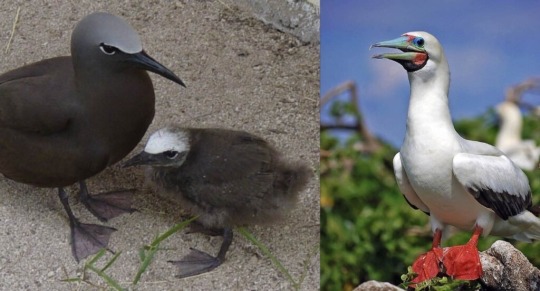
18 years after rats were eradicated, Tromelin Island off the coast of Madagascar is a thriving colony of seabirds once again.
The same story happened over and over during the age of exploration: Europeans brought rats or rabbits on board their ships and dumped them on delicate, pristine island ecosystems.
Hundreds of islands became desolate wastelands this way, damage that has for the most part been reversed, as GNN has reported, in one of the greatest conservation stories ever told.
Now, this small teardrop of sand, rock, and palm trees in the southern Indian Ocean, is the most recent example of conservationists being able to completely rewild a landscape back to a period before European contact.
Spanning just 1 square kilometer, Tromelin Island is now home to thousands of breeding pairs of 7 seabird species like the masked and red-footed boobies.
By 2013, these two species had doubled in number from the precarious, rat oppressed lows of just a handful in 2004. In the subsequent 9 years, white terns, brown noddies, sooty terns, wedge-tailed shearwaters, and lesser noddies all came back on their own initiative.
Matthieu Le Corre, an ecologist at the University of Reunion Island, told Hakkai Magazine how, in some cases, restoring seabird populations can be a tricky thing based on the particular species’ nesting habits.
On other islands where Le Corre has worked, they’ve had to install robotic bird calls and life-size replicas to convince the birds the island is a safe place to nest again. But Tromelin Island needed no such help, since these terns, noddies, and boobies are much more dispersed in their nesting patterns.
“In terms of conservation, it’s a wonderful success,” Le Corre says.
#good news#environmentalism#science#environment#nature#animals#conservation#birds#tromelin island#madagascar#animal protection#baby animals#sea birds#invasive species
1K notes
·
View notes
Text



Hooded Merganser (female). 7:45 a.m. 27° F, feels like 15° F, wind gusts up to 25 mph. January 5, 2025. Cove Island Park, Stamford, CT. (@dkct25)
#bird#merganser#hooded merganser#daybreak#twilight#Cove Island Park#stamford#Original Photography#Photographers On Tumblr#duck
409 notes
·
View notes